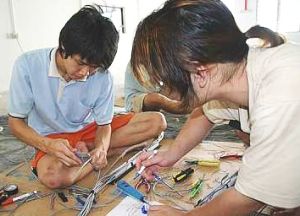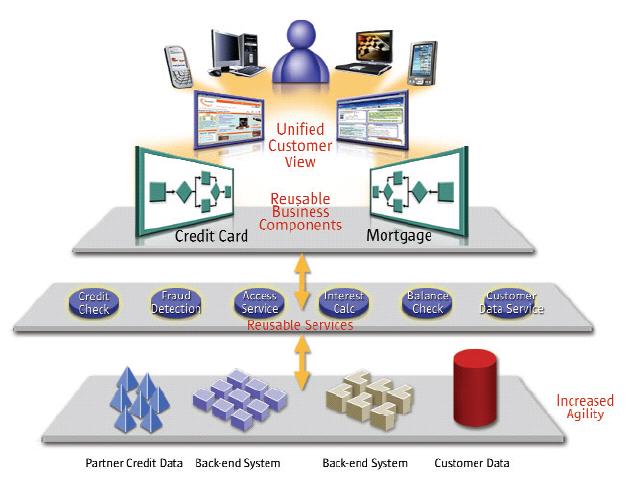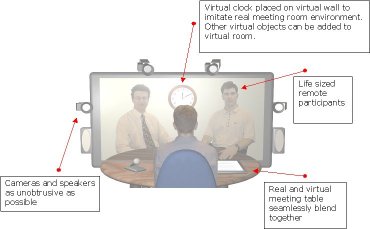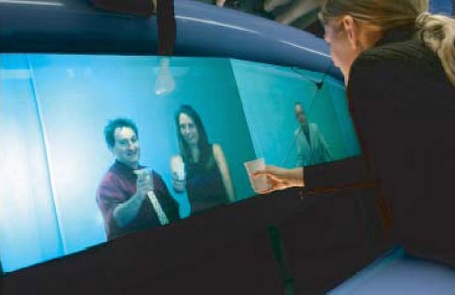Launching on http://ischool.tv
This serves to inform our valued customers of the recent changes to our website that publishes our iSchool suites of products. We have undergone quite a major re-engineering exercise in providing better information services to meet the today demands and needs.
Objectives
Our re-build is aimed with the following objectives and goals:-
· Being user friendly
· Providing ease of navigational flow
· Providing same look-&-feel for all iSchool products blogs
· Standardized items on all iSchool product sub-blog sites
· Providing ease of product reference
· Online Manual in multi-lingual
· Better security control and assurance
· Consolidated FAQs and Releases blog
· Latest open source WPMU blogging engines
So, what are new?
Firstly, we upgraded the WPMU blogging engines to the newest and latest release, which addressed many known security risks and provide many new add-on features.
Secondly, we relocated the existing SMS content from http://schoolnet.com.my to http://ischool.tv/sms for standardization and streamline all the iSchool suite of products; in our determination to provide overall support and delivery to our customers.
Thirdly, centralized and consolidated all iSchool products content to the url: http://ischool.tv. All future information related to respective iSchool suite of products shall be updated in this centralized site and the respective product site shall provide individual product and support information only.
Features and Benefits
We provided lots of new features and functionality to all the content feeds which bring many great benefits to all customers. For details, please click on the url link Launching on ishool.tv for details.
Computerworld – Google Apps finding a niche in Singapore
By Victoria Ho
ComputerWorld Singapore
Following the Singapore launch of Google’s enterprise web application service in November last year, it stands poised to win users in niche areas, despite the ubiquity of traditional software.
Smaller firms in Singapore with constrained budgets and those with no habits formed by using traditional applications will find Google Apps most appealing.
Springboard Research senior market analyst, Ravi Shekhar Pandey, sees take-up spread across three groups of users in the foreseeable future.
SMBs (small- and medium-sized businesses) in Asia not already using Microsoft Office would want to give this a shot, because they now have an alternative,he said. “Those already using MS Office may wish to incorporate Google Apps for specific tasks which require Google’s sharing capabilities for lighter use.”
Giving Springboard’s own example, he said while the analysts will stick to Excel for its robust features, its sales team uses Google Spreadsheets for “collaborative marketing efforts across offices where we don’t have to crunch a lot of numbers.”
As for large businesses, he sees adoption only from the individual “not any corporate strategies, in effect”.
This might lead to an eventual transition, however. Citing Salesforce’s example of how it was first picked up by a work group, eventually catching on in popularity, Shekhar sees this as a possible way Google might find its foothold through corporate doors. Ravi thinks that Google is still pretty far away from replacing desktop applications, seeing its web applications as a complement to existing systems, if not just a cheaper alternative.
From an Asian perspective, I think you will see two waves’ new user adoption could be higher as many countries are still computerising and Google offers a practically zero-cost alternative, but existing users will probably be slower as they prefer the existing security and features, and they won’t have to deal with bandwidth issues, he said.
Globally, some 100,000 companies have signed on for its paid, premium service. Although Google seems far away, its offering may be just what smaller Asian companies need.
Google Apps Premier Edition builds on the previously released, free web application service hosted on the customer’s domain, and comes bundled with document and spreadsheet editors, in addition to its immensely popular email client and calendar.
The Premier Edition offers 10GB of storage per user and a 99 per cent uptime (for GMail, not the others) guarantee, for US$50 (S$76) a year.
While Google’s advantages lie in its familiarity and brand name, it isn’t robust or secure enough to support a large organisation’s needs. However, smaller cash-strapped companies might find it a boon, and just enough for their needs, wrapped in a very affordable package.
The price is right
Tiong Ting Ming, IT advisor at SMJK (Sekolah Menengah Jenis Kebangsaan), which controls 78 schools in Malaysia, faced a number of obstacles to upgrading its schools’ IT infrastructure. The students wanted a way to share documents, have personal school email accounts and be connected to the school system for homework updates.
But funding was the biggest obstacle. Since the school group’s IT relied on the charity of external parties and organisations, it was not about to upgrade its entire hardware architecture. In fact, Microsoft licences for its Office suite were beginning to be a problem, and the school turned to its open-source counterpart, Open Office, instead.
However, Open Office required computing power they couldn’t spare. SMJK’s computers, mostly Pentium IIIs, were unable to handle the software, either crashing or behaving very sluggishly.
So Tiong turned to Google Apps Educational Edition, a free version giving them 2GB of storage per user and a pledge from Google to supply 200,000 email accounts, after they wrote to Google with a plea.
Tiong estimates these accounts will last the organisation approximately five years. More importantly, he estimates this set-up will cost a mere eighth of an otherwise large expenditure of around US$3 million-US$4 million with a traditional desktop software set-up.
When interviewed, he didn’t seem to think that latency issues were of significant concern. However, his organisation does not require quick response time from its applications. Since the majority of users will be students, who are used to the free GMail, this is likely to be easily accepted.
“In the past, you would have felt something amiss if you didn’t store your document on a physical diskette. But these days, in a networked environment, we are much more accustomed to saving something “invisibly” on a network drive, he said.
What’s the difference between saving it on a network drive and saving it “somewhere” on a server? Students don’t feel it odd; it is just a change in mindset, he said.
Ovum’s principal analyst, David Bradshaw agrees. He said the lingering fear that somehow your data isn’t secure if it isn’t on your systems in your building, is fast growing outdated. He thinks the security one feels with having physical storage is merely artificial since data can still be stolen regardless of where they are stored.
A big user experience shift
It will take time, however, not just to change mindsets about latency and storage issues, but also that of working exclusively on a web application.
Hong Kong-based Sanden Electronic Equipment went through a few teething problems of the same nature when it first started out. Thomas Fung, its engineering manager, recommended a gradual approach to getting the organisation to turn around.
GMail was more popular, compared with the other applications, which were slow on the take-up. Calendar was next, because it was more integrated with GMail’s interface, and only after sometime did the staff use Docs, spreadsheets and the start page.
I expect it takes time to change people’s habit from using desktop software to online software, he said.
Steve Hodgkinson, research director also at Ovum, regards user willingness to move as an evolution issue, saying that Google’s offerings are “designed for a new generation of users who are growing up with always-on broadband and will be comfortable with web applications.”
Nonetheless, he is waiting for Google to step up its game and “evolve over time to plug gaps like presentation software.” He sees that the movement over to web applications might take the form of a phased transition rather than a wholesale dumping of desktop software. Big processor loads such as graphic manipulation and games will remain a mainstay of desktop software, he said.
Best effort won’t cut it
Although Google offers 99 per cent uptime on GMail for its Premier Edition, that’s exactly what it is only GMail. The other applications don’t enjoy the same assurance. When you have problems accessing company documents with no written clause to assure uptime in that respect, this won’t be accessible to the medium- and upward-sized business.
In an interview, Kevin Gough, product manager at Google, explained that the company uses its own products to power its enterprise.
Google already handles billions of dollars of financial transactions. Google itself is a large publicly-traded company and under strong financial scrutiny. We are on the same systems as our customers, the same exact standards and versions, he said.
Engage and Motivate Your Students with an Education Blog
Many teachers have been looking for a way to implement blogging into their classrooms. Amber Teaman, from Garland ISD, has a way for us to be able to do it. In her presentation, she shared with teachers a safe and easy solution on how to use blogging in the classroom and engage students in better ways.
A blog is an online journal (or web log) where you and others can post and comment on information. Blogs range from random thoughts about the world around us to serious education or research based information.
So how would you use it in your classroom? Ms. Teaman shared with us many ways she has used it in her classroom. To start out, she used the blog as a communication outlet for those stories that students wanted to share with her, that she just didn’t have time to listen to during class. By starting out this way, the students got comfortable answering questions the teacher posted in the blog and then also commenting on other student’s posts.
Read the original Story at eSchool – http://www.eschoolnews.com/cic/tcea/blog/2007/02/001636.php
‘Grammar Girl’ podcasts a huge success
 (CNN) – Grammar lessons often are associated with high school drudgery — diagramming sentences and memorizing obscure rules in between passing notes in English class — but an Arizona technical writer has turned the seemingly dry subject into a popular podcast.
(CNN) – Grammar lessons often are associated with high school drudgery — diagramming sentences and memorizing obscure rules in between passing notes in English class — but an Arizona technical writer has turned the seemingly dry subject into a popular podcast.
Mignon Fogarty, the woman behind “Grammar Girl’s Quick & Dirty Tips for Better Writing,” has been explaining the finer points of commas, colons and split infinitives since July.
She recently weighed in on a dispute over apostrophes that divided the U.S. Supreme Court. Grammar wasn’t the issue in the 5-4 decision, but Justice Clarence Thomas referred to “Kansas’ statute” in the majority opinion, while Justice David Souter wrote about “Kansas’s statute” in the minority.
Fogarty said both men were correct, but that she preferred leaving off the extra s.
“Justice Thomas’ name ends with an s, so you might guess that he is more familiar with the issue,” she told her audience.
Fogarty, 39, said she got the idea for the podcast, sort of an Internet radio show, during a California vacation. (Interactive: What is podcasting?)
“I was sitting in a coffee shop one day in Santa Cruz, California, on vacation and editing technical documents, because I work on vacation, and found so many grammar errors and it just hit me that grammar was something that I had expertise in that would lend itself to a short tip-based podcast,” she said.
The show is currently the 47th most popular podcast on Apple’s iTunes service, right behind “Merriam-Webster’s Word of the Day.” It has been as high as number two, Fogarty said. She said the shows have been downloaded more than 1.3 million times.
Fogarty said she’s gotten some publicity, but that most of her audience comes from word of mouth.
“I get e-mails from people who say ‘I just discovered your podcast and I’ve told everyone I work with’ or ‘I told every teacher at my school,'” she said. “I get a lot of e-mails like that, where people discover it and they just can’t wait to tell everybody, which is really cool.”
Sara Kearns, a librarian at Kansas State University, has been listening to Grammar Girl since October, and recommended it on the library’s blog.
“I listen to Grammar Girl in chunks. A couple of weeks may go by and then I’ll listen to 10 of them at a time,” Kearns said in an e-mail interview. “The genius of Grammar Girl, apart from her ability to simplify grammar, is that she posts the transcripts so that I can stare at a gnarly piece of grammar until it clicks.”
Fogarty said her audience ranges from schoolchildren in China to CEOs in the United States.
“I try to make it fun. I’ve even had people say ‘I’m not that interested in grammar, I don’t know why I listen.’ But I’m glad that they do,” Fogarty said. “I think people like that it’s short. It’s sort of a low-commitment podcast. And yet they learn something that’s useful that they can put to use when they write their next e-mail.”
The success of the show prompted Fogarty to produce two more podcasts “Mr. Manners’ Quick and Dirty Tips for a More Polite Life” and “Money Girl’s Quick and Dirty Tips for a Richer Life.” She said she’s started selling ads and is even getting some interest from book publishers.
One drawback of her work, she said, is that listeners are nervous about writing her.
“I feel bad about that, I don’t want people to be afraid to write to me, but about half of my e-mails start with some sort of pre-apology for errors they expect to make,” she said.
She said they shouldn’t worry, and that she doesn’t send back e-mails with big, red correction marks.
Visit Grammar Girl site
Teachade: Online social networking for teachers

Educators who are looking for online sites to communicate and collaborate with their peers can register free of charge with Teachade, a site that lets educators share resources, create online learning communities, and connect with colleagues.
Teachade is available to K-12 teachers, pre-service teachers, student teachers, and college professors through a free registration process. The site uses Web 2.0 collaboration and social-networking technologies. Teachers can join groups formed around topics such as music, 6th-grade science, supporting educational technology, increasing student and child safety, and so on. Educators also have access to a personal and group calendar and can keep lesson plans or other items in personal “favorites” files.
The Sunday – Raring To Go
The Star, 21 January 2007
Among the top schools in the country, there is a buzz of excitement. They are now competing to be one of the 300 “cluster schools†which will give them some autonomy in running their schools and developing areas of specialisations.
SM TEKNIK Tawau in Sabah has the honour of being the first cluster school to be identified under the Education Ministry’s National Education Blueprint 2006-2010.
 Although the school is known for its Information and Communication Technology (ICT), super principal Mary Yap (right) is also looking at improving in other areas like co-curricular excellence.
Although the school is known for its Information and Communication Technology (ICT), super principal Mary Yap (right) is also looking at improving in other areas like co-curricular excellence.
With this mission in mind, she will convert every Tuesday into a co-curricular day. And no one will be spared. The principal, teachers and students will participate in aerobics first thing in the morning.
“If we want the students to be fit, we have to lead by example, so what better way than to get everyone involved.
“After the aerobics, the students will join their clubs or participate in other sporting activities,†she says.
This means the school day on Tuesday will be extended from 12.30pm to 3pm to accommodate the first two periods for aerobics and co-curricular activities.
“We’ve got the blessing of the Parent-Teacher Association to do this,†she shares enthusiastically while waiting to board the plane from the KL International Airport after listening to Education Minister Datuk Seri Hishammuddin Tun Hussein’s New Year message on Thursday.
A torch run will be held on Jan 26 to mark the inaugural Co-curricular Day.
Yap is acknowledged for transforming a struggling school into an excellent one after being inspired by a school in Malacca.
“It really opened the eyes of the teachers on how things could be done. Now we want our school to be used as a benchmark for others,†she shares.
When Hishammuddin visited the school last April, he said he was amazed at the leadership and management of the school and announced that it would be made a cluster school.
Best practices
The cluster school initiative can create a platform for schools to share their knowledge and best practices, says Tiong Ting Ming, principal of SMJK Dindings, Lumut, Perak, one of the leading schools in ICT in the country.
“We have built our ICT infrastructure internally and with minimal funding. SMJK Dindings fulfilled the criteria to be a model school in ICT, and can be a benchmark for other schools. Our experience can help others,†he explains.
Says Tiong, his school was initially nominated by the Perak State Education department but now it has to wait for the final decision since the application is open to all.
“I am very proud of my school’s achievements. There are not many ICT model schools like this in our part of the world,†he adds.
All for autonomy
A principal in a special education school is happy that cluster schools have more independence in choosing its teachers and students, as well as be able to raise additional funds to finance its programmes.
“If we are selected as a cluster school, I hope that we will be able to upgrade our physical facilities as we are quite an old school.

SMJK Dindings students helped put in the cabling when they built their ICT equipped building.
“I also hope our teachers will have more opportunities to be sent abroad for training to upgrade themselves,†she says.
The school wants to focus on music for blind students as well as excel in goal ball and athletics.
“I hope to get a coach from abroad to train our students for competitions at the international level as we are already the national champions in goal ball. We also have two students who recently won gold and bronze medals in athletics at the Fespic (Far East and South Pacific Games Federation) Games for the disabled hosted by Malaysia last year.â€
All for autonomy
A principal from a Chinese school in Penang says his school has applied to be included in the cluster school programme.
“I submitted two proposals last year. We are now waiting for word from the ministry,†he adds.
Having more autonomy in managing the school is one of the factors that attracted him to join the programme.
“If I get to choose who to hire, I will want to hire the top teachers to teach my students. We are also keen on producing all-rounders and want to place emphasis on both physical and mental development, aside from academic excellence.
Autonomy is what attracted the principal of one of the top girls’ schools in the Klang Valley to seek the status of cluster school.
“I want to be able to select the good students instead of taking in those selected by the state education department. Having more autonomy would also mean we have control over the subjects offered. Now we have to get permission if we want to make any changes,†she says.
The principal of a boys’ residential school says having more autonomy would enable him to have more streams at the school.
“Of course, we will need to get the agreement of the Parent-Teacher Association but it would be nice to be able offer more than science so that students have more options to choose from,†he adds.
More facilities
Bukit Jalil Sports School (BJSS) may be ahead of most schools in sporting equipment and facilities, but being selected as a cluster school will enhance the school’s sports achievements, shares a teacher there.
“We already have many benefits as a sports school but once we become a cluster school, we will get better infrastructure and trainers,†he says.
BJSS caters to athletes from 28 sports and can take up to 600 students.
Plans for a sports school in Perlis is currently underway and is expected to be ready some time in 2008.
It would be the fourth sports school in the country after Bukit Jalil in Kuala Lumpur, Bandar Penawar in Johor and another one in Pahang.
In addition, there are schools designated as part-time sports schools or Sekolah Sukan Sambilan, which specialise in specific sports. Selected students can transfer to these schools, which include SM Anderson, Ipoh, for hockey and SM Victoria, Kuala Lumpur, for rugby.
Original story – http://thestar.com.my/education/story.asp?file=/2007/1/21/education/16616697
New Free Software Will Help Close Digital Divide in Education
Early 2007, software that will enable educators to: access and share education materials such as lesson plans, form communities, and collaborate on projects will be available free of charge.
According to the non-profit developer Teachers Without Borders, these TWB Tools will allow the world’s 59 million teachers to access materials that traditionally have only been available to educators in developed nations with access to high-speed internet access and elaborate computer networks.
One tool, named TWB Classroom, will allow K-12 teachers to enroll students, create varied course materials themselves, and provide grading assistance so that information can follow students throughout their educational arc…
Read original story on USInfo and All American Patriots
eSchool News – Six Education Technology trends to watch in 2007
This original story is available at eSchool News Site: http://www.eschoolnews.com/news/showStoryts.cfm?ArticleID=6781&page=1
Service-oriented architecture, ‘cloud computing’ among the developments sure to have an impact on educational technology in the coming year
By Gregg W. Downey, Editor, eSchool News
December 22, 2006 —Educational technology at last has progressed to the point where differentiated, individualized instruction clearly is possible for students anywhere on the planet. It can be delivered at any time, in just the right form, with whatever frequency might be required. This has long been the dream of educational technologists. And today the dream has come true–at least in terms of the technology. The barriers to universal access are no longer technical; they’re political and financial.
So while governments and society grapple with the challenges of making what’s already technically feasible universally available, let’s take a look at what’s next on the ed-tech horizon. Here are six emerging ed-tech trends I think could have a significant impact on schools and colleges in 2007.
Trend No. 1: The leveling power of the World Wide Web
Call it community-generated content, social networking, or–if you’re a young technology company pitching yourself to venture capitalists–Web 2.0. Whatever you call it, it’s the trend toward end-users, consumers, teachers, and students creating content for themselves and their peers. This self-generated content can be delivered in writing, in audio files, or in video clips.
No longer need you be a major motion picture studio to create a box-office smash. You don’t need a radio station to be a popular disc jockey. You don’t need a television network to create a video that can be seen literally by millions. Why, you don’t even need a rich daddy anymore to become an overnight billionaire–or close to it.
Here’s a $1.6 billion case in point: The three young men who founded YouTube.
YouTube, of course, is the internet site that allows anyone to watch or post videos, everything from stupid pet tricks to the president’s State of the Union address. In February 2005, Steve Chen, Chad Hurley, and Jawed Karim–YouTube’s founding trio–threw a dinner party here in San Francisco. They spent most of the evening shooting digital videos and photos of themselves. Next day, they wanted to post these to the internet. Well, posting the digital photos was no problem, but the three young men discovered it was nearly impossible to post their party videos.


Being resourceful lads and computer geeks, they had the problem whipped by the spring of last year. They created a site that let average computer-using videographers post their work without having to download special software. And so it was that the first 18-second YouTube video went up on the internet on April 23, 2005. The video shows Karim standing with elephants at the zoo. “The cool thing about these guys,” intones the young narrator, referring to the elephants, “is that they have really, really, really long trunks. And that’s cool. And that’s pretty much all.”
With those immortal words was YouTube launched. It was opened to the public several days later. Steve Chen was financing the startup with his credit cards.
A couple of months ago, Chen and Hurley agreed to a secret meeting with Google acquisition attorney David Drummond at a Denny’s restaurant halfway between the Google campus in Mountain View, Calif., and the YouTube offices in a loft above a pizza joint in San Mateo, Calif. At Denny’s in two clandestine meetings, Google executives and YouTube’s three founders worked out a deal. Google would acquire the video site for a reported $1.65 billion in Google stock.
Now, Steve Chen can pay off his credit cards and can even finish earning his bachelor’s degree from the University of Illinois.
YouTube is just the latest and most spectacular example of how the democratization of the internet is about to change everything. For education, it seems to me, the populism inherent in the internet means one key thing: Call it student-centered learning, project-based education, constructivist pedagogy–all these related education philosophies and movements finally have a medium to give them genuine momentum.
YouTube also illustrates the leveling affect the internet is having on technology and business. This has big implications for schools and colleges as they seek to prepare their students for life and work in the 21st century. It’s notable, too, that Google figures into this rags-to-riches tale, because Google is a central player in another emerging trend affecting education.
Trend No. 2: Cloud computing
About 20 years ago, all anybody could talk about was the concept of client/server computing. This is the model most of us still know best–a central server or servers linked through a network to a set of client computers, all running proprietary software–like Windows, OS X, Linux, and so on.

It would appear that the era of client/server computing is about to end. Back in 1993, Google’s current CEO, Eric Schmidt, was the chief technology officer for Sun Microsystems. At the time, he made a prescient prediction. He said, “When the network becomes as fast as the microprocessor, the computer hollows out and spreads across the network.”
Sun streamlined Schmidt’s prediction into a memorable tagline: “The network is the computer.”
Not too many people back then knew exactly what Schmidt meant by that. In fact, the world at large is only just beginning to get it now. The light is dawning as the concepts of “service-oriented architecture” and “web services” begin to wend their way into the contemporary lexicon. “The premise,” Schmidt says, “is that the data services and the architecture should be on the servers.”
By data services and architecture, he means computer processes and protocols. To greatly oversimplify it, you don’t use a word processing application like Word 2003, for instance. Instead, you call up, from a remote server, a function you might need. Such a function might be the process that makes a word appear in boldface on your computer screen.

Furthermore, the server from which you call up the boldface process needn’t be on your own computer anymore–or even in your IT department.
Here’s where Schmidt gets poetic.
“We call it ‘cloud computing,'” he proclaims. “The servers should be in a cloud somewhere. And if you have the right kind of browser or the right kind of access, it doesn’t matter whether you have a PC or a Mac or a mobile telephone or a Blackberry–or new devices still to be developed–you can get access to the cloud.”
What’s all this about?
Google, along with Microsoft, Yahoo, Ask.com, and others, have positioned themselves for a new era of data management via the internet, which brings me to . . .
Trend No. 3: Service-oriented architecture
In a general sense, service-oriented architecture–or SOA–is a software solution intended to enable the enterprise to organize and marshal multiple processes. With SOA, software applications no longer are massive bundles of functions and processes. Instead, applications are composed by assembling modular services. A service, remember, is a single software function–such as cancel school bus route. It can be executed on demand by any system, without regard to its operating system, platform, programming language, or geographic location.

What’s revolutionary about SOA is not the concept itself, which has been around for a while, but the fact that it now can be implemented via the World Wide Web. Just as web pages load on any platform, web services work the same regardless of platform, provided they are built using universal standards.
Developers build composite applications by interconnecting, or “orchestrating,” services in a process flow. This flow can then, itself, be structured as a service. Developing such composite web services is often called Business Process Management. Standard SOA tools streamline the task of building service-orchestration models–similar to creating a flow chart.
SOA will have a major affect on the education enterprise, just as it will on all other types of enterprises, but some of the same concepts also have the potential to revolutionize instruction.
Trend No. 4: The gathering SCORM (Sharable Content Object Reference Model)
A close cousin of service-oriented architecture is the Sharable Content Object Reference Model, or SCORM.
SCORM is a collection of standards and specifications adapted from multiple sources to allow for the interoperability, accessibility, and reusability of digital learning materials: everything from a video clip illustrating how cells divide to a PowerPoint explication of a sonnet.

The SCORM specifications–now in edition three–are becoming increasingly important for ensuring that digital content can be integrated into any learning management system (LMS) software, regardless of its manufacturer. What’s more, SCORM is opening the door for the creation of “digital repositories,” or collections of sharable, reusable online content that educators can search through to find items they can incorporate into their own instruction.
Though SCORM might sound complicated, its desired outcome is quite simple–to facilitate the sharing and reusability of digital learning materials among educators. Educators hope the untethering of content from its method of delivery will be a big outcome of SCORM.
Toward that end, educators should consider building SCORM compliance into their specifications when evaluating and purchasing online content and delivery systems. Virtually all of the major LMS solutions used by schools today comply with the standard. Blackboard, Desire2Learn, and Pathlore, for instance, all have been certified as SCORM-compliant, and the open-source system called Moodle is on its way toward compliance.
Having a single set of standards on which to build content from the ground up–standards that allow educators to easily share and reuse content, or take the best elements from this content and tailor it to meet their own unique needs–has the potential to revolutionize instruction.
Before, with textbooks, you had to offer students information in more or less the same way it was put together by the textbook company. Now, with SCORM, you can assemble plug-and-play learning objects in a way that matches the needs of the learner.
Curriculum objects might liberate education from the rigid structure of textbooks, but nothing anytime soon is likely to take the place of an excellent teacher or an inspiring professor.
Trend No. 5: Telepresence and anytime, anywhere education

Imagine a conference room with six chairs, three on each side of a conference table. Envision a clear glass panel running down the center of the table.
Walk into this room while a high-level parlay is under way, and you’d see six executives deep in conversation. But here’s the catch: Only three of them are physically present. The three participants closest to you actually are in the room–in Chicago, say. The others are in San Jose, Calif., but their life-size, high-definition images are on the glass partition in the Chicago conference room.


Read Detail
According to an industry insider, unsuspecting visitors entering a room during a telepresence conference have at first been unaware that all the participants were not physically present:
“A person coming late to the conference and standing near the back of the room didn’t realize a telepresence conference was going on until someone from the remote location said, ‘Hey, Jim, could you move into camera range so we can see you.'”
The illusion reportedly is heightened because both locations use matching furnishings. Other elements that enhance the effect are that participants appear to make direct eye contact with one another, the streaming video is smooth and flawless, and the audio is perfectly matched to lip movement.

See the French Telecom’s Flash Presentation on Telepresence
Whether schools and universities would be willing to pay for a full-fledged telepresence capability is unclear. But, in time, the potential for education could be substantial.
Leading universities already are making course content available over the internet, and medical schools are presenting in high-definition clinical demonstrations via Internet2. Large K-12 districts increasingly rely on video conferencing for management meetings and professional development.
As Cisco chief John Chambers puts it: “Video communications is the most effective way to communicate there is.”
It seems to me telepresence is arriving just in time–just as the internet is underscoring the inter-relatedness of our world as never before.
Trend No. 6: 21st-century learning

An organization called the Partnership for 21st Century Skills has developed a program designed to help educators prepare their students for the future. A consortium of leading schools, education associations, and corporations, the Partnership is working to put America on notice: Our students are falling behind in the world. America is losing its edge. Action is required now to reverse the decline in the ability of this country to compete in the global economy. Every child in America needs 21st-century knowledge and skills to succeed as effective citizens, workers, and leaders in the 21st century. Specifically, according to the Partnership, our students need:
- Information and communication skills;
- Thinking and problem-solving skills;
- Interpersonal and self-direction skills;
- Global awareness;
- Financial, economic, and business skills; and
- Civic literacy.
You can learn more about the Partnership for 21st Century Skills at their web site, which is well worth a visit.
The confluence of these six trends–the flattening influence of the internet, cloud computing, SOA, SCORM, telepresence, and the drive for 21st-century skills–makes it entirely possible to ensure our children are well prepared for the rest of this century. It really is possible now to bring the finest teachers and professors, instructional styles customized to the needs of individual learners, and best-of-breed curricula into the service of all our students.
Gathering up the will and resources needed to do it would make for a happy New Year, indeed.
Links:
Partnership for 21st Century Skills
http://p21.org
“Gathering SCORM could transform eLearning” (eSN Online, April 2006)
http://www.eschoolnews.com/news/showStory.cfm?ArticleID=6249
“‘Telepresence’ adds realism to video conferencing” (eSN Online, October 2006)
http://www.eschoolnews.com/news/showStory.cfm?ArticleID=6661
eSchool News – Top 10 ed-tech stories of 2006
eSchool News recently had a two-part article on Top 10 Education Technology stories of 2006″, giving the ten most significant educational technology stories of the past year.
Original stories are at – Part 1 & Part 2
I had extracted some of them here:
Cell phones: The good, the bad, and the ugly
 Few technologies these days are as ubiquitous as the cell phone. But while parents rely on the portable devices to keep a bead on their children, and students use them to freely swap photos, music, and text messages with friends, the debate over the cell phone’s place in schools is heating up.
Few technologies these days are as ubiquitous as the cell phone. But while parents rely on the portable devices to keep a bead on their children, and students use them to freely swap photos, music, and text messages with friends, the debate over the cell phone’s place in schools is heating up.
In the classroom, some educators say the devices represent what amounts to a double-edged sword. While the growing list of interactive features–including cameras, video-capture technologies, and storage capabilities–have many educational technology advocates pushing schools to embrace the cell phone as a potentially powerful classroom learning device, resisters argue that cell phones represent a distraction and a potentially dangerous security risk that, if not held in check, could spell trouble for schools.
In a recent survey conducted by the Associated Press, America Online, and the Pew Internet and American Life Project, young adults indicated that they used their cell phones as mini-PCs. Not only do the devices make and receive phone calls, they said, but they also serve to store information, run basic computing applications, and swap music files, ring tones, pictures, and movies. Some educators said the results were encouraging and pointed to how cell phones could be used in the classroom to influence learning. In some schools, they already are: Boston University earlier this year reportedly became the first to introduce a class on using cell phones as video-production tools, and other colleges and universities are replacing telephone landlines with cellular services for students that include educational content.
But just as the survey shed light on the potential for cell phones in education, other, more troubling developments have served to mute that enthusiasm. For example, in one recent story, eSchool News reported on how students were using a high-pitched noise that only they can hear as a cell phone ring tone that is undetectable to most teachers. There also have been reports of students using cell phones to cheat on tests, take compromising pictures of classmates in school locker rooms, and socializing with friends– instead of learning–during the school day.
As the debate over cell phones in schools has evolved, so, too, have the policies intended to govern the use of such devices in schools. While some parents–anxious to have a method of reaching their child in the event of an emergency during the school day–have argued that policies barring cell phones from schools are out of touch with reality, several districts, including the New York City Public Schools, have taken steps to ban cell phones entirely for the risks they pose. In New York, parents have filed a lawsuit challenging the city’s policy.
One-to-one computing: Promising solution–or overhyped mistake?
One-to-one computing is another issue that continues to spark discussion–and debate–in education circles, particularly as developments in technology offer a range of new choices for schools.

Buoyed by the arrival of former MIT Media Lab Director Nicholas Negroponte’s $100 laptop–a low-cost, Linux-based machine designed to bring the power of educational technology to students in developing nations–advocates of one-to-one computing in schools contend that an emerging crop of affordable laptop alternatives are making the promise of one-to-one computing a fiscal reality for schools.
Earlier this year, Intel Corp. announced its own alternative to the $100 laptop, a $400 machine called Eduwise that, unlike Negroponte’s device, will be marketed immediately to U.S. schools.

In addition, Fourier Systems has introduced a new one-to-one computing device that  aims to “bridge the gap between the cost-prohibitive laptop and the less functional handheld device.” Weighing 2.2 pounds, the company’s Nova5000 is a Windows CE 5.0 tablet computing device that aims to meet students’ everyday computing needs, including internet access, word processing, spreadsheets, and eMail–starting at $419.
aims to “bridge the gap between the cost-prohibitive laptop and the less functional handheld device.” Weighing 2.2 pounds, the company’s Nova5000 is a Windows CE 5.0 tablet computing device that aims to meet students’ everyday computing needs, including internet access, word processing, spreadsheets, and eMail–starting at $419.
What’s more, a company called nComputing claims it can supply a one-to-one computing solution for schools for less than $100 per student, by fueling the computing needs of up to seven users off the processing power of a single machine.
Despite many new options that are driving down the cost of one-to-one computing, some parents and educators say there are still few measurable indicators to justify a large-scale, system-wide deployment, at least at current prices.
Though scaled-down alternatives might be appropriate for some learning environments, fully functional laptops remain cost-prohibitive in most school districts. Even for schools that can afford them, the question remains whether the price of the machines is too high for schools to optimize their investment.
As schools continue to demand more out of their technology purchases, the conversation about one-to-one learning in schools seems certain to continue in the New Year. The original site have many key stories they published on the topic in 2006.
7. 21st-century learning environments: Building schools of the future
As educators search for ways to prepare today’s students for the challenges of tomorrow’s workforce, school districts nationwide are doing more than simply changing the policies that govern how teachers teach; many are redesigning the traditional classroom altogether, building special learning environments–and even whole schools–designed to better prepare students for success in a global, knowledge-based economy.

In Philadelphia earlier this year, students and administrators celebrated the opening of the School of the Future. A joint venture between software giant Microsoft Corp. and the school district, the $63 million building–equipped with everything from wireless laptops and electronic whiteboards to energy-efficient windows and customizable furniture for project-based learning environments–was touted as a cost-effective model that other schools around the nation could emulate as they sought to redesign today’s high schools for the 21st century.
Philadelphia isn’t the only place where architecture and philosophy have come together to redefine the notion of the typical American schoolhouse. Across the country, design firms have been working closely with educators to reconfigure traditional learning environments to reflect the needs of 21st-century learners.

And the movement toward redesigning education for the 21st century got a huge boost last summer, when billionaire investor Warren Buffet announced a contribution to the Bill and Melinda Gates Foundation, a strong supporter of the concept, totaling about $1.5 billion a year.
6. Social-networking web sites challenge policy makers

The growth of social-networking web sites such as MySpace.com, the popular online community that connects millions of users with friends around the world by enabling users to post their personal profiles online, continued to confound school leaders and state and federal policy makers in 2006. Though the sites present an opportunity for peer collaboration and cross-cultural exchanges among students, they also have become trolling places for online predators and hotspots for cyber-bullying.
According to a recent survey conducted by the National School Boards Association, only 35 percent of the educators, administrators, and school board members who attended the group’s Technology + Learning Conference in November said their districts had policies to address the use of social-networking sites by their students. Fifty percent of respondents said their districts had no such policies, and 15 percent weren’t sure.
School leaders aren’t the only ones struggling with how to protect students who use social-networking web sites. Members of Congress introduced a bill that would ban the use of MySpace and other such sites in schools and public places, prompting outrage from some educators who believed the bill went too far. MySpace itself has taken steps to enhance security, though critics of the measures question whether they will be effective.
Despite the challenges these sites pose for schools, proponents of online social networking say the sites, when used effectively, can be educationally beneficial.
5. Online learning comes of age, multiplying the opportunities available to students and teachers.
The past year saw an explosion in online learning programs for teachers and students, continuing a trend that some experts predicted would begin to level off.
Instead, according to a report from the North American Council for Online Learning, enrollment in K-12 online classes grew by more than 50 percent in some states–and at least 38 states now feature either state-led online learning programs, policies regulating online education, or both. In higher education, the story was the same: According to the Sloan Consortium, which tracks online enrollment figures at higher-education institutions annually, online enrollment was up 40 percent over the previous year.

Educators say the trend is fueled by several factors. In some states, schools are using online learning as a way to reach out to students who are sick or cannot attend neighborhood schools. (To facilitate this, the nonprofit Virtual High School launched a pilot program earlier this year that is offering virtual-school seats at no cost to three children’s hospitals–and the group hopes to expand the program to other hospitals nationwide.) In other places, virtual-school programs provide an alternative for students whose needs aren’t being met by a traditional education. (At Stanford, educators have developed an online high school for gifted and talented students interested in taking more advanced, college-level courses. And in Mississippi, to curb a high school dropout rate that is among the highest in the country, state education officials are proposing a self-paced, online curriculum as one solution.)
Earlier this year, Michigan became the first state in the nation to make virtual learning a requirement for high school graduation. And as online learning has exploded in popularity, at least two groups–the Southern Regional Education Board and the National Education Association–have released standards defining excellence in online teaching.

One recent development that will help push online learning to even further heights is the Sharable Content Object Reference Model, or SCORM, an emerging set of standards designed to promote interoperability, accessibility, and reusability of online learning materials. Proponents say the specifications should help schools integrate any SCORM-compliant digital content into their existing learning management systems (LMS), regardless of manufacturer.
The emergence of SCORM is making innovative experiments like the one in California possible, where a new program under way in select elementary schools has history teachers scrapping traditional textbooks in favor of digital learning materials. But despite this progress, an ongoing patent dispute between leading online LMS provider Blackboard Inc. and its competitors threatens to cast a cloud over the LMS market.
4. Video goes ‘viral,’ expanding the reach of college lectures–and turning ordinary students into internet celebrities.

Last year it was MySpace that exploded onto the internet scene, forever changing the nature of the web. This year, it was the video-sharing web site YouTube. Providing users with the ability to upload and share their own videos easily online netted YouTube’s creators $1.6 billion when the site was purchased by Google Inc. earlier this year–and it has made internet celebrities out of countless teens armed only with video cameras and a little imagination. As author and inventor Ray Kurzweil noted at the National School Boards Association’s annual Technology + Learning Conference in November, this kind of technology “is very empowering; it’s very democratizing.”
YouTube was merely the most high-profile example of a trend that really flourished in 2006: the rise in online video, which has had enormous implications for schools. Besides helping students become creators and publishers of their work, the emergence of YouTube, Google Video, and other online video-sharing services has given schools a wide array of new tools to help them connect with today’s crop of media-savvy learners.
Looking to include the use of video more in the learning process, innovative educators in Missouri recently launched a new online television network that delivers educational content via IP-TV. Many schools, and now even some entire conferences, have begun streaming football games and other sporting events on their web sites, eliminating barriers such as cable or satellite TV availability or advertising support. And the development of the video iPod has opened new doors for schools to make video recordings of lectures and other content available to students for downloading and watching at their leisure.
For instance, at the University of California, Berkeley, students and others all over the world now can access a special account through Apple’s iTunes U, where they can download webcasts of lectures and other events on campus to their desktop, laptop, or portable iPod. Many colleges and universities also have tapped video as a way of reaching out to prospective students, using online tours and other video resources as a recruiting tool to lure students who otherwise might not be able to visit the campus in person.
Even eSchool News has seized upon the online video trend. Earlier this year, eSN launched TechWatch, a free monthly video news program that reports on ed-tech news from around the nation. The program is available via streaming video online–but it’s also available in other digital formats for school systems to broadcast over their local cable channels.
3. Education 2.0 has arrived: The emergence of web-based services and other open technology alternatives is changing the nature of school software.
Hoping to lure teachers and students, thus capturing the attention of a whole new generation of users, Google–the world’s largest internet company–this year launched an online portal for educators, complete with lesson plans and other resources designed to help educators use the company’s free online tools (such as Google Docs and Spreadsheets, an open alternative to Microsoft’s Word and Excel) in their classes. The site also contains resources for using Google Maps in education, and Google last month ran an online project encouraging students from around the globe to brainstorm ways to slow or stop global warming–using the company’s software to collaborate.
Google is perhaps the largest, but it’s by no means the only, example of how the emergence of free, or low-cost, web-based services and software is changing the nature of school computing. For years, schools have been using web-based software for their data systems, administrative systems, and even their curriculum software–and students and teachers have used web-based eMail accounts. But now, even applications that traditionally have been tethered to a desktop computer, such as productivity tools–spreadsheets, word processors, and the like–can be accessed entirely online. And many of these tools are available to use or license free of charge.
Besides the obvious bottom-line benefit these open technology alternatives to costly proprietary software offer, educators say the services also enable them to customize their digital learning environments more easily–providing a host of resources designed to meet the needs of teachers and students, regardless of platform. Web-based tools also allow users to collaborate on the same documents from different locations. But there are some challenges, too: Using web-based software requires a constant and reliable internet connection, for instance–and some people also are concerned about the privacy of information held in sign-in accounts stored on company servers.
Times Magazine’s Man of The Year 2006
Congratulations! You are the Time magazine ”Person of the Year.”
The annual honor for 2006 went to each and every one of us, as Time cited the shift from institutions to individuals — citizens of the new digital democracy, as the magazine put it. The winners this year were anyone using or creating content on the World Wide Web.
Read the story direct – Person of the Year 2006
[swf width=”374″ height=”272″]http://www.time.com/time/personoftheyear/2006/flash/poy2006.swf[/swf]

Time magazine Editor Richard Stengel, holds the Time Person of the Year magazine. And the winner is you: anyone using or creating content on the World Wide Web.
“For seizing the reins of the global media, for founding and framing the new digital democracy, for working for nothing and beating the pros at their own game, Time’s Person of the Year for 2006 is you,” the magazine’s Lev Grossman wrote.
The magazine has put a mirror on the cover of its “Person of the Year” issue, released on Monday, “because it literally reflects the idea that you, not us, are transforming the information age”, Editor Richard Stengel said in a statement.
You beat candidates including Iran’s President Mahmoud Ahmadinejad, China’s President Hu Jintao, North Korean leader Kim Jong-il and James Baker, the former US Secretary of State who led Washington’s bipartisan Iraq Study Group.
Time has been naming its person of the year since 1927 and the tradition has become the source of speculation every year, as well as controversy over unpopular choices such as Adolf Hitler in 1938 and Ayatollah Khomeini in 1979.
The aim is to pick “the person or persons who most affected the news and our lives, for good or for ill, and embodied what was important about the year, for better or for worse”.
Grossman said the creators and consumers of user-generated internet sites showed a community and collaboration on a scale never seen before.
“It’s about the many wresting power from the few and helping one another for nothing and how that will not only change the world, but also change the way the world changes,” said Grossman, Time’s technology writer and book critic.
“The tool that makes this possible is the World Wide Web,” he said. “It’s a tool for bringing together the small contributions of millions of people and making them matter.”
MySpace – bought by media giant News Corp last year for $US580 million – has more than 130 million users around the world and adds around 300,000 members a day, while YouTube – bought by internet search leader Google last month for $US1.65 billion – gets about 100 million daily views.
“These blogs and videos bring events to the rest of us in ways that are often more immediate and authentic than traditional media,” Stengel said.
“Journalists once had the exclusive province of taking people to places they’d never been. But now a mother in Baghdad with a videophone can let you see a roadside bombing or a patron in a nightclub can show you a racist rant by a famous comedian,” he said.